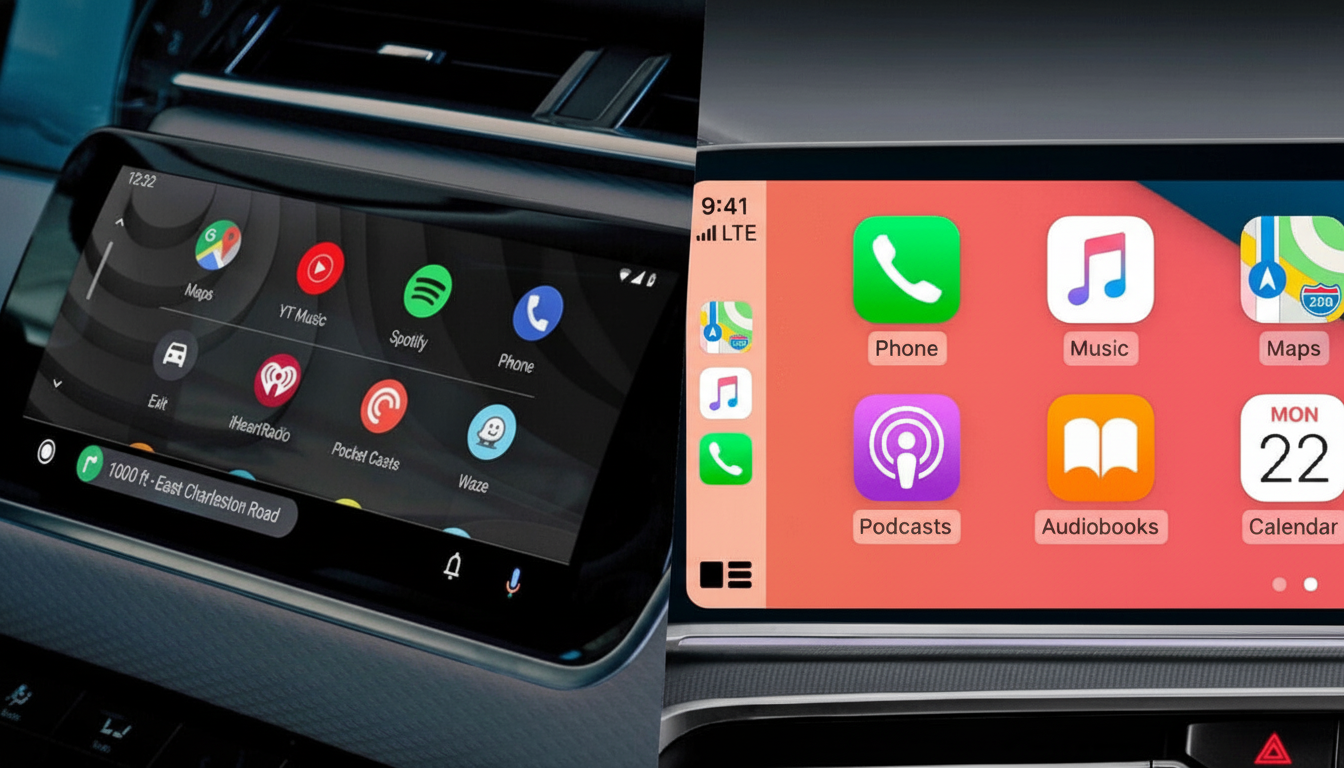Google has been working on a major upgrade to Android Auto that would introduce home screen widgets to the car dashboard, similar to the widget-focused experience Apple currently offers via CarPlay. While there is no official announcement yet, code repository references and leaker Mishaal Rahman, along with XDA contributor AssembleDebug, posted screenshots demonstrating the feature.
In simple terms, Google is exploring letting drivers add regular Android phone widgets to a dedicated panel on the Android Auto interface, with a snapshot of navigation or media alongside. This would ship via updates to the Android Auto app installed on the user’s primary Android phone and is identified internally as “Earth.”

Test screenshots show common widgets including:
- Spotify
- Google Calendar
- Weather
- Clock
- Gemini
Some widgets appear fairly limited, while others are surprisingly capable, depending on the widget’s size, as Google works to get the interface right for a project that is still being explored.
An essential distinction, at least initially, is that tapping a widget does not take you into the full app experience. Android Auto has long prohibited arbitrary app launches in the car, and that intent will remain consistent with safe driving.
Android Auto today offers small, often less-than-helpful widgets at the bottom of the display. Earth expands on this by placing widgets on the main screen, typically alongside Maps, offering glanceable information without switching apps—such as your next meeting, an ETA tile, how much charge your EV has, or your team’s live score. The internal code name referenced in some strings is “E.”
Why glanceable widgets could improve in-car UX
Glanceability and predictability are key elements of safe in-car UX. Widgets help with both by distilling information into easy-to-read cards that one can select quickly. They also let drivers personalize the dashboard to show the exact information they care about—music, the next meeting, or an ETA—without forcing developers to build one-size-fits-all layouts.
Apple has said CarPlay is available on 98 percent of new U.S. car sales, citing survey results indicating that 79 percent of current buyers consider it essential for their next vehicle. Android Auto is available from most major automakers in a similar way. If Google executes successfully, widgets could be a pivotal differentiator for center-screen interfaces.
How Android Auto’s widget approach compares to CarPlay
Apple’s Dash view makes a strong impression with a dashboard that resembles a collection of iOS widgets, and next-generation CarPlay goes deeper with widgets on the center display and instrument cluster. Apple’s Dash model uses highly consistent components to ensure system-level scannability and uniformity across vehicles.

Google’s approach appears more open by leveraging the same phone widgets users already employ. That brings substantial personalization benefits but also introduces design challenges—readability and touch targets can become harder while the vehicle is moving. Before release, Google is likely to introduce safeguards, such as a widget certification program for car-safe widgets and a roster of authorized widget layouts and dimensions that developers must follow.
Safety and policy considerations for in-car widgets
Android Auto’s existing app templates exist for a reason: media, maps, and other categories require uniform controls and navigation guidelines. Arbitrary widgets could disrupt this, but a reasonable limit is a tiered behavior model that varies by driving state:
- Fully interactive widgets are available only when parked.
- While driving, interaction is limited or disabled for certain widgets.
- Strict typography and contrast rules ensure high readability.
Regulators and safety researchers have long linked visual-manual distraction to increased crash risk. The NHTSA records thousands of people killed in distraction-related incidents each year, and the AAA Foundation shows that the longer eyes are off the road, the worse driving performance becomes. Any coherent framework should minimize eyes-off-road time—large text, high contrast, and predictable placement.
What to watch as Google iterates on the Earth project
Earth clearly is pre-release. The rough edges suggest months of iteration ahead. Much of Android Auto can ship via app updates or server-side changes, though a realistic timeline could span 12–18 months to research, design policy, align with partners, secure approvals, ship guidelines to developers, and have OEMs test across screen sizes from 7 inches to 15 inches.
Items to watch include:
- Google publishing developer guidelines for “Auto-approved” widgets
- Early partners and showcase widgets at launch
- Movement-state behavior that adapts interactivity while driving
- Certification and review processes for car-safe widgets
If Google secures those certifications and reviews, Android Auto could deliver a strong experience—CarPlay quality matched with Android’s look and feel.
Bottom line: widgets could bring Android Auto near CarPlay
Android Auto closing in on CarPlay for widgets isn’t just about feature parity. It’s a step toward a smarter, more private, and less tap-heavy driving experience. The quality of execution will determine whether this becomes a game-changer or a missed opportunity, but the progress so far is encouraging.

